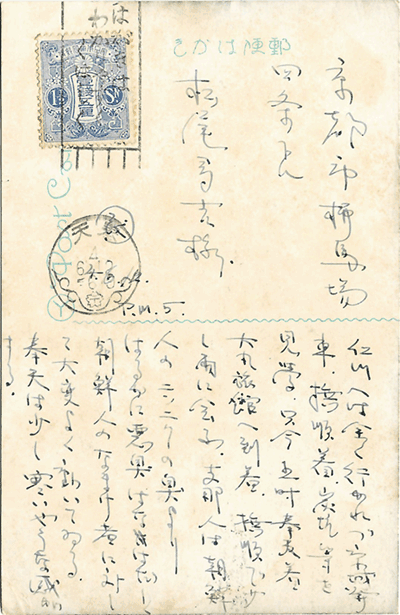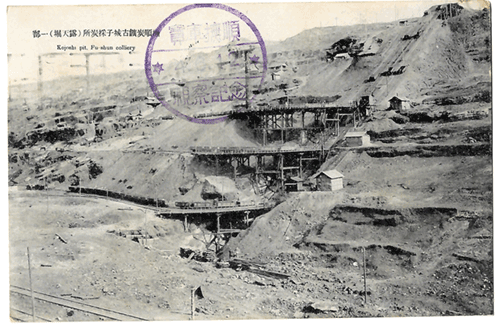Immutable Mobiles
 The idea of mailing a postcard with a picture of a working mine to a friend or loved one may seem a little odd to us today. Yet many evidently did so then. This was a time when heavy industry, which so drastically remade the world, had its own aesthetic appeal.
The idea of mailing a postcard with a picture of a working mine to a friend or loved one may seem a little odd to us today. Yet many evidently did so then. This was a time when heavy industry, which so drastically remade the world, had its own aesthetic appeal.
At least one card in my collection had been written on, stamped, and sent. According to the writing on the back, the sender had taken the train from Keijō (present-day Seoul) to Fushun, where they stopped for a “study tour” (見學) of its coal mines and other facilities. They made no mention of operations at the site but felt compelled to pass judgment on the workers they encountered there: “The Chinese stink more than Korean garlic and are far more hardworking than the lazy Koreans.” Racialized notions of difference and deficiency, so casually scribbled here, were the bedrock on which the enterprise of empire was built.

On the other side of the card is an image of the open pit, with mine cars loaded with coal and other excavated material being hoisted by a skip up an incline in the background. This black-and-white picture is marked by an imprint in purple ink bearing the phrases “treasure house Fushun” (寶庫撫順) and “inspection keepsake” (視察記念), a commemorative stamp that both celebrated the wealth of Fushun’s coal resources and served as evidence that one had visited the site and beheld its abundance.
| « The World in a Postcard | Life and Work in Coal Capital » |
